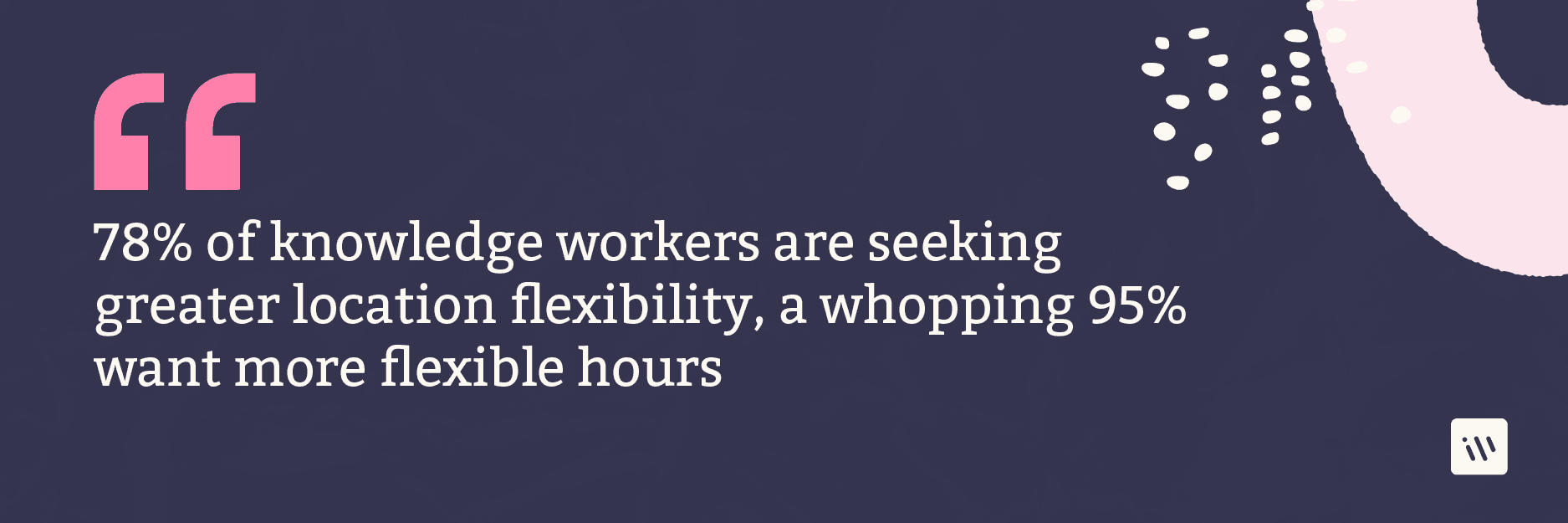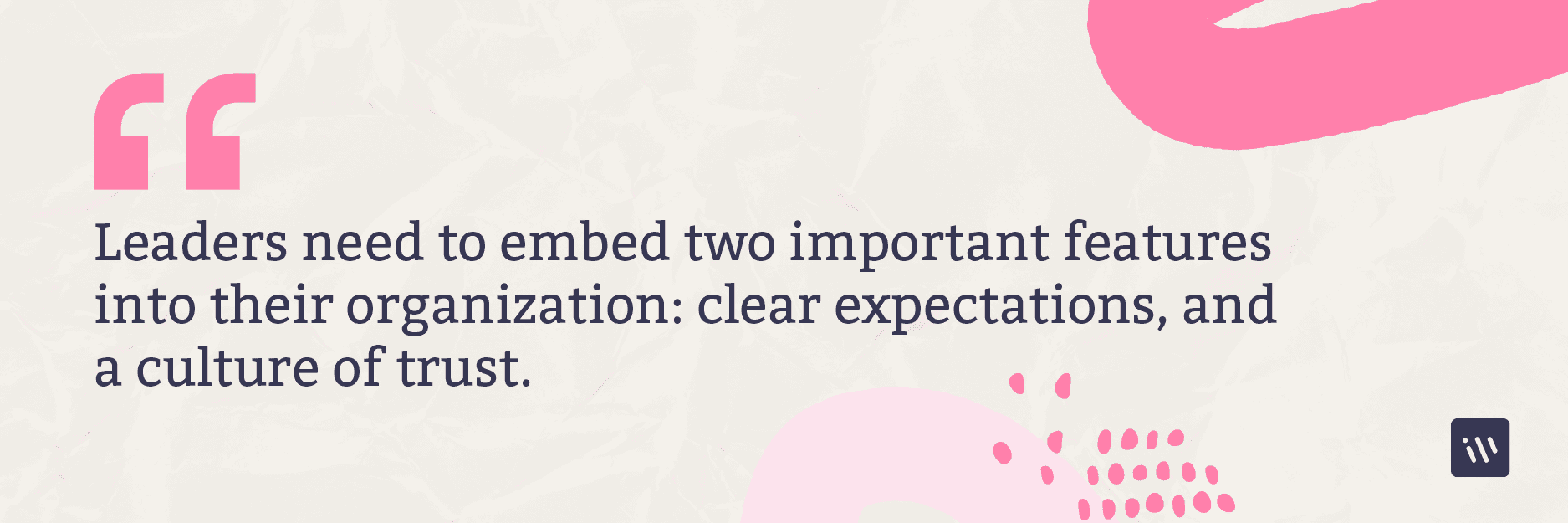Employers Are Missing the Point: Flexibility Isn’t Just About Location

Barry Nyhan
Senior Demand Gen & Marketing Ops
March 1 2022

In his new column, future of work specialist Jared Lindzon contends that flexibility is about so much more than just location.
In March of 2020, less than a month after its staff transitioned to remote work, Twitter announced that it would allow its employees to work from home permanently. Days later, competitor Facebook followed suit, as did Shopify and CoinBase.
Over the last two years, nearly every company struggling to attract and retain talent – a challenge that now extends well beyond the tech sector – has had to take a hard look at their remote work policies in response to employee demands. According to a 2021 study conducted by FlexJobs, 58% of employees want to work remotely full time, and another 39% would prefer a hybrid model. In fact, 24% said they’d be willing to take a double-digit pay cut in order to do so.
Today, most employers – and especially those caught in the middle of the Great Resignation – are putting significant time and resources towards providing more remote and hybrid work. In a survey conducted in July of 2021, 27% of executives said they will continue offering remote work post-pandemic, and another 29% said they intend to utilize a hybrid model, with only 38% sticking to in-person only.
The question of “where” work gets done, however, is less significant to most workers than the question of “when.” Employers who are solely focussed on the former could be missing the point.

There is no question that employees want greater location flexibility, and employers have demonstrated a willingness to oblige, but it’s not the kind of flexibility they want most. While 78% of knowledge workers are seeking greater location flexibility, a whopping 95% want more flexible hours, according to a recent study conducted by Future Forum.
The findings echo those of another study conducted by employee experience management provider Qualtrics, which found that 87% of workers want to be in control of their schedules, and have their performance measured in results, not hours. In fact, most employees said they would prefer the ability to choose their hours to the ability to work from any location.
Fortunately for employers, providing the kind of flexibility employees prefer might actually be easier. Transitioning the workforce from its previously centralized structure to one with greater location flexibility requires addressing some significant logistical hurdles. Organizations that want to provide ongoing remote or hybrid work options need to manage changes to their real estate, legal, insurance, cyber security, and other long standing policies and structures. It also requires a new approach to employee management, new cultural norms, and new tools to facilitate remote collaboration. That is perhaps why 80% of HR executives say the transition to hybrid work has been “exhausting.”
Providing more flexible working hours, however, typically doesn’t require tackling those big logistical challenges. In order to provide this type of flexibility, leaders need to embed two important features into their organization: clear expectations, and a culture of trust.

Organizations that can effectively communicate what they need from their staff through mutually agreed upon goals and benchmarks – and trust them to get the work done whenever it suits them – can stop measuring productivity in hours.
Simple as it may sound, both of these principals fly in the face of the traditional approach to people management. Historically, organizations have used their middle managers for direct oversight, and have gotten accustomed to equating physical presence with productivity. If an employee shows up every day on time and is willing to put in a few extra hours when needed, they are considered a top performer, regardless of their output. If their colleague shows up late on a consistent basis and refuses to work overtime they are labelled a problem employee, even if their output is identical.
Now that we’ve spent almost two full years without direct, in-person oversight, it should come as no surprise that employees are starting to question whether hours are an effective measurement of their efforts. Instead, they want to be given clear expectations, a transparent evaluation process, the tools and resources they need to succeed, and be trusted to meet those expectations without a manager looking over their shoulder.

Like those early pandemic days, organizations are once again engaged in an arms race over workplace flexibility, this time to address the question of “when.” In recent months companies like Japanese tech giant Panasonic have introduced a four-day workweek, as have entire nations, including Belgium, Iceland, New Zealand and Spain. Others, meanwhile, are experimenting with a 5-hour workday.
Since the start of the pandemic, employers have been largely focussed on the location-based aspect of workplace flexibility. As employee expectations continue to evolve, and as pressures from the Great Resignation continue to mount, it’s now time to shift focus, and consider ways to give employees greater control over their time.